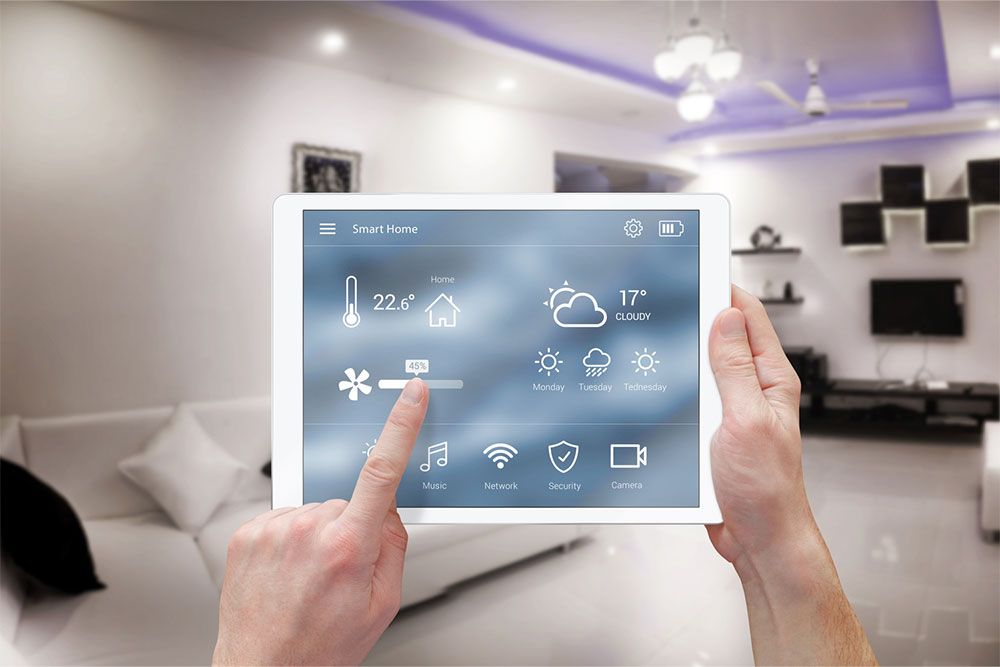Gone are the days of flipping switches and taking care of every little detail at home manually. With the advancements in technology, the world has ushered in a new era of smart homes, wherein various aspects of the home can be brought online, from lighting and temperature control to cooking, cleaning, and more, to create an intelligent network of devices controlled by voice command, a smart home hub, or even a smartphone.
Uses of smart home technology
Before investing in smart home appliances, one must learn how this technology is applied in the house and the purpose it serves.
Lighting
Applicable to interior and exterior lighting, one can set up various types of smart lights at home – those activated by voice and/or by motion, or those programmed to turn on and off at a certain time.
Entryways
It is also possible to shift control of entry and exit to smart gadgets. For instance, doors can be locked and unlocked with voice commands, video doorbells can be used at strategic points, and automatic garage doors can be set up to make entry and parking a breeze.
Kitchen
Most kitchen appliances have smart versions available. For instance, there are coffee machines that are pre-programmed/scheduled, dishwashers that adjust cycle settings depending on how dirty the dishes are, and refrigerators that can be used to create shopping lists and order groceries.
Entertainment
This includes televisions, stereo systems, home theater systems, etc., which can all be controlled using smartphones or voice commands.
Family and pets
One can also make use of smart devices in the house to ensure the safety and well-being of their loved ones. This could include indoor cameras, baby monitors, automatic pet feeders, etc.
Apart from these, smart systems can also be found for lawnmowers, sprinklers, and other devices to keep the lawns clean and manicured.
Steps to set up a smart home on a budget
1. Set a budget and timeline
Once an individual has decided to turn their home into a smart home, it’s time to start planning. To begin with, one needs to set a budget and timeline for this change. This can be done in two ways – add one or two affordable smart home devices at a time or add all of the devices at once. While the former presents a more economical approach, it can take significant time to accomplish.
The budget here would largely depend on which route one takes. For instance, one could add a smart bulb or two at a time – an inexpensive smart home solution that would cost around a hundred dollars to complete. On the other hand, shopping for larger appliances can raise bills into the thousands of dollars, which may not be affordable for everyone.
2. Determine the needs
When shopping for smart home appliances, it is easy to go overboard and surpass one’s budget. That is why, it may be worthwhile to come up with a list of things one requires as well as the budget.
This can be done by determining what the goals of their “smart home” are. Is the goal to have a full home conversion, or will a few basic home improvements and voice commands suffice? This decision will help one buy gadgets that pair with each other seamlessly.
3. Choose smart devices
With the important decisions out of the way, it is time to start choosing smart devices for the home. One could opt to connect all their devices to a smart hub, such as Google Home or Samsung SmartThings. These hubs allow every gadget to be connected to a single device instead of having to switch between multiple apps or remote controls. Alternatively, if one is only looking for a couple of cheap smart home gadgets, a hub may not be necessary at all.
One may also consider adding smart components like smart switches, thermostats, smart speakers, carbon monoxide detectors, etc. to their home. Further, a detailed list of compatible devices can be found on the manufacturer’s website, so be sure to consult it before making any new smart gadget purchases.
4. Shop for devices
With so many options available on the market today, it can be quite difficult to shop for smart home devices. Proper research can help individuals make informed decisions regarding their purchases. Look for deals, discounts, and bundled packages, and shop around the sale season to get budget-friendly home automation solutions. One can even find some entry-level smart home systems under $100.
5. Set up and connect smart devices
Once the purchases have been made, it’s time to set up and connect the smart devices. To ensure that this can be done smoothly, one needs to make some arrangements.
- Free up space to physically place the devices for set up.
- Invest in a Wi-Fi network that covers the entire house. If there are any spots in the house that the Wi-Fi does not reach, consider adding a network extender.
- Have a fast and reliable internet connection that has the bandwidth to take on the load of these smart devices.
For many of these smart home devices, it is possible to DIY their setup. To do so, one needs to closely follow the manufacturer’s instructions. Then, if one is also using a smart hub, open the hub’s assistant app and connect the new device to complete the process.
